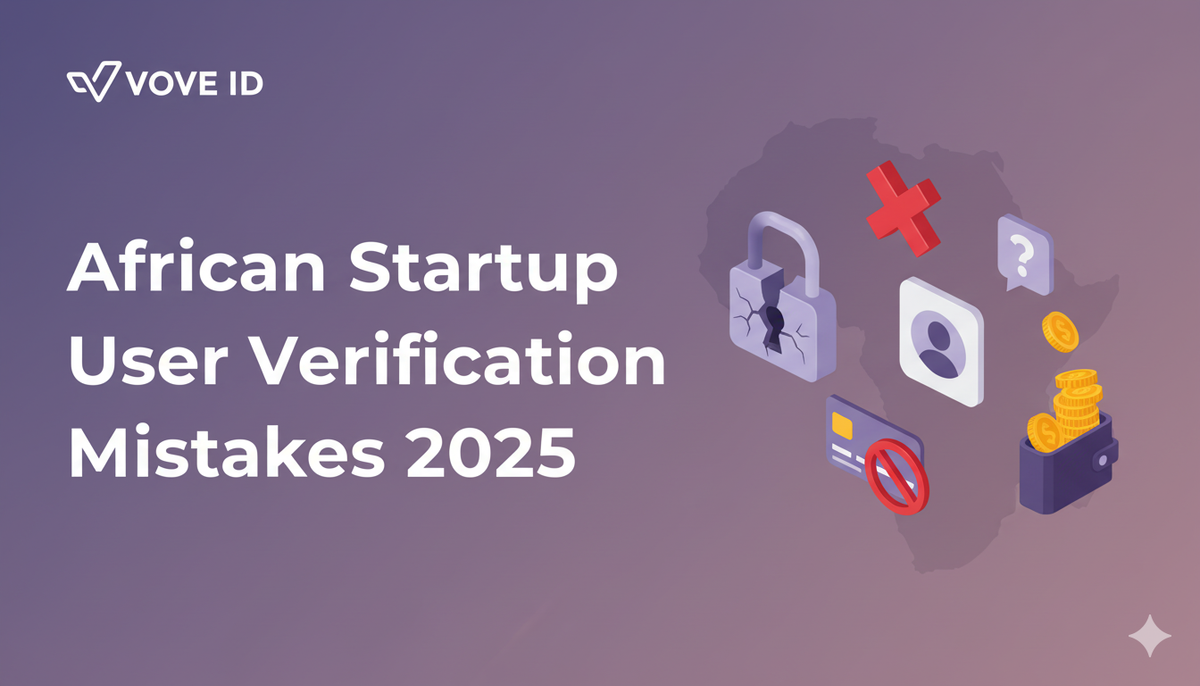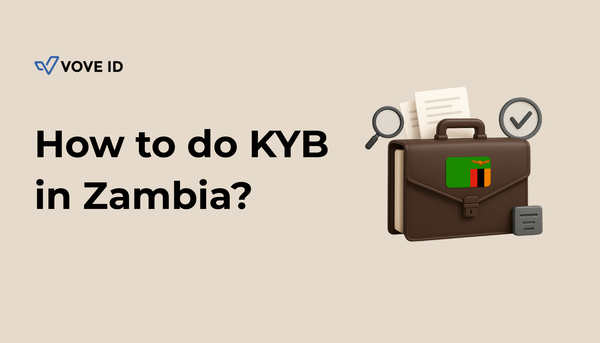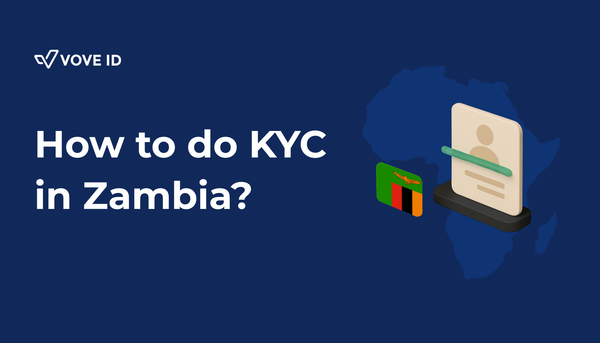Digital Onboarding Mistakes African Startups Keep Making in 2025
Discover the top 10 digital onboarding mistakes African fintech startups make in 2025 and learn how VOVE ID’s automated KYC, KYB, and AML solutions streamline compliance, reduce fraud, and accelerate growth across Africa and MENA.

Digital onboarding has become the backbone of Africa’s fintech and platform economy. Whether it is a mobile wallet in Kenya, a lending app in Nigeria, or a gig-economy marketplace in Ghana, every high-growth startup now depends on fast and compliant user verification.
Yet many startups still repeat the same onboarding mistakes. These issues slow down growth, frustrate users, increase fraud exposure, and attract regulatory scrutiny.
Modern solutions like VOVE ID, which automate KYC, KYB, and AML checks across Africa and MENA, show how much smoother onboarding becomes when regional complexity is handled properly.
Below are the most common onboarding mistakes African startups continue to make in 2025 and how to avoid them.
1. Treating Every Market the Same
Startups often assume that onboarding requirements work the same across Africa. In reality, each country has unique regulators, ID systems, and compliance expectations.
Examples:
- Nigeria requires strict AML compliance under CBN and SCUML with enhanced due diligence for higher-risk users and VASPs.
- Kenya uses a risk-based model under CBK and FRC with strong reliance on biometric national IDs.
- South Africa enforces biometric-linked identity verification under FIC and updated FICA rules.
- Egypt applies CBE-driven eKYC guidelines with requirements that differ from Sub-Saharan markets.
A single onboarding workflow for multiple countries usually results in failed verifications, regulatory gaps, duplicated engineering work, and poor conversion rates.
🔧 Fix: Build country-specific flows or use a platform that adapts automatically.
2. Relying on Manual Document Review
Many early-stage teams still manually review ID photos, business certificates, or utility bills. This slows onboarding, increases operational cost, and introduces inconsistency.
Manual review causes:
- unpredictable decisions
- delays that can last hours or days
- higher staffing needs
- scalability limits once user numbers rise
Automated biometric and document verification is now standard across Nigeria, Kenya, Ghana, UAE, and Saudi Arabia.
🔧 Fix: Automate high-volume checks and reserve manual review for exceptions only.
3. Ignoring KYB and Beneficial Ownership Checks
Startups onboarding merchants or corporate clients often underestimate KYB requirements. Regulators across GIABA, ESAAMLG, and MENAFATF expect companies to verify registries, identify UBOs, screen for sanctions, and monitor risk continuously.
Skipping KYB results in onboarding the wrong legal entities, missing beneficial owners, increased exposure to shell companies, and potential compliance findings.
🔧 Fix: Treat KYB with the same seriousness as KYC and include UBO validation, registry checks, and watchlist screening.
4. Overcomplicating the Onboarding Flow
Some teams add friction to compensate for weak backend logic. Common examples include extra forms, redundant data fields, document requests too early in the flow, or multiple screens before ID capture.
This often produces 40 to 60 percent drop-off, especially in low-bandwidth environments.
🔧 Fix: Simplify UX and request only what is needed at the right step.
5. Not Optimizing for Mobile-First Users
More than 85 percent of onboarding sessions across Africa take place on mobile devices.
Yet many platforms still struggle with:
- heavy pages
- poor compression or slow capture of IDs
- unresponsive layouts
- slow video liveness checks
- flows that assume desktop-level connectivity
These issues increase abandonment and make fraud detection harder.
🔧 Fix: Prioritize mobile optimization, low-latency flows, and lightweight capture processes.
6. No Real-Time Fraud Prevention
Fraud in 2025 is more advanced and easier to scale. Startups relying on basic checks face risks such as synthetic identities, altered ID cards, deepfake video liveness attacks, proxy fraud, repeat account creation, and merchant impersonation.
Kenya’s CBK and Nigeria’s NCC reported rising deepfake-enabled onboarding fraud in 2025.
🔧 Fix: Use biometric matching, device fingerprinting, tamper detection, and real-time watchlist screening.
7. Treating AML Screening as a One-Time Action
Screening only once exposes platforms to compliance gaps. FATF-aligned regulators require ongoing monitoring to detect changes in user risk, sanctions updates, PEP exposure, or UBO modifications.
GIABA recommends quarterly rescreening for high-risk users and annual rescreening for low-risk users.
🔧 Fix: Automate periodic AML rescreening for all customer and merchant types.
8. Not Tracking Drop-Off Data
Most startups lack visibility into where users quit the onboarding process. Without data, teams cannot fix conversion problems.
Common blindspots include missing step-level tracking, no metrics for failed ID captures, no understanding of mobile versus desktop drop-off, and no analytics on document rejection reasons.
🔧 Fix: Instrument every step of the onboarding journey.
9. Building Identity Verification In-House
Building verification internally seems appealing but becomes expensive and difficult to maintain. Teams end up handling ID templates, fraud signals, registry integrations, AML logic, and security requirements, all while trying to maintain uptime.
Many startups eventually abandon in-house solutions after losing months of development time.
🔧 Fix: Use proven infrastructure and allocate engineering resources to core product work.
10. Entering New Markets Without Compliance Preparation
Startups expanding to new countries often underestimate local regulatory differences. Each market requires updated KYC rules, AML scoring models, local forms, specific UBO definitions, regulator reporting formats, and new customer agreements.
Poor preparation often leads to launch delays or onboarding suspensions.
🔧 Fix: Prepare compliance requirements before expansion.
How VOVE ID Solves These Problems
VOVE ID provides unified onboarding infrastructure for Africa and MENA.
It helps fintechs, digital wallets, mobility apps, iGaming platforms, trading services, and payment companies reduce risk while simplifying verification.
Capabilities include:
- Real-time biometric and document KYC
- Automated KYB with registry checks and UBO identification
- Continuous AML sanctions and watchlist monitoring
- Compliance alignment with CBN, CBK, FIC, FIU, DFSA, FSRA, CBUAE, and SAMA
- API-first workflows that reduce manual work and speed up onboarding
Conclusion
Digital onboarding in Africa continues to evolve, but recurring mistakes still limit growth. The main issues remain overcomplicated flows, insufficient fraud prevention, country-neutral processes, and weak KYB or AML monitoring.
Regulators across ESAAMLG, GIABA, and MENAFATF are raising compliance expectations. Startups need verification systems that scale across regions.
Automation delivers measurable ROI. According to BCEAO and CBK reports published in 2025, automated KYC and KYB reduce manual workload by 80 to 90 percent, helping teams focus on product development and market expansion.
VOVE ID helps eliminate these onboarding risks by automating KYC, KYB, and AML in one platform and enabling secure, compliant growth in every market.
Simplify onboarding and stay compliant across Africa and MENA. Try VOVE ID today and see the difference in minutes.




